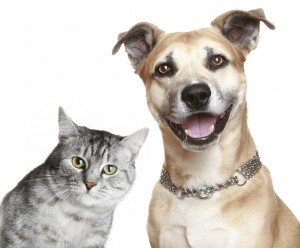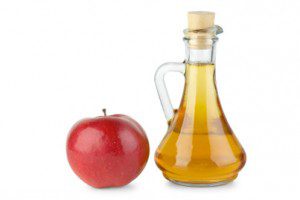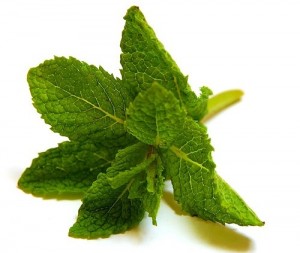By Ana Jadanec
Guest Writer for Wake Up World
There are many reasons people keep animals as pets. You might have gotten your pet because you found it cute, you liked the breed, you wanted to save it from an animal shelter, you thought it would make you exercise more and lose weight, you were seeking company, you wanted protection… or any other valid reason.
Regardless of your reason, any living being requires our attention, care and love. It is not sufficient just to feed them and walk them, our pets require grooming just as humans do, and because they tend to pick up fleas and ticks, in some cases even more. And it’s not just for their appearance, but for their hygiene too.
For the health conscious pet owner, here are some natural ingredients and remedies to repel fleas and ticks on dogs (and some for cats).
[pro_ad_display_adzone id=”110028″]
Preventive measures:
1. Bathing / Washing
Keeping your dog and the environment it’s in clean is the best job you can do. Soapy water will get rid of fleas, and regularly washing your dog’s bedding will eliminate flea eggs and larvae.
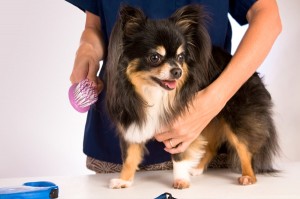 2. Grooming / Combing
2. Grooming / Combing
If your pet looks homeless on most days, even though it sleeps on a comfy cushion, there is no miracle product out there that can replace regular hygiene. It is up to you to maintain your dog in a presentable and hygienic state.
Dead dog hair gives birth to mats, which are a breeding ground for fleas and a hiding spot for ticks. Some breeds require more grooming than others, but regular combing is always the key. Fine flea combs are a great tool that can be used daily, and any fleas caught should be drowned in soapy water. Combing your dog will also allow you to see what’s going on closer to the skin, hence you’ll be able to spot ticks that might have just started their supper.
3. Keeping your dog healthy and strong
A strong immune system in pets and humans keeps insects away, as they prefer to attack weaker, more sensitive animals.
Many herbs have proven results with respect to the immune system. Taraxacum officinalis (Dandelion) is a rich source of vitamins and minerals, including Vitamin A, D, C, various B Vitamins, iron, lecithin, silicon, potassium, magnesium, zinc and manganese. Echinacea purpurea is well known for its excellent benefits for immune functioning and for its antifungal, antiviral and antibacterial properties. Withania somnifera (Ashwagandha) and Silybum marianum (Milk Thistle) are also beneficial, with Milk Thistle regarded as one of the most important herbal liver tonics and restoratives. Medical use of Milk Thistle can be traced back more than 2000 years! [1]
Fur and body treatments:
4. Apple cider vinegar
A little apple cider vinegar in your pet’s food/water helps maintain correct PH balance and healthy digestion, arthritis, alleviate allergies, maintain great skin conditions and control parasites such as fleas, ringworm, ticks, fungus, and bacteria. It is suitable for dogs and cats.
Dosage and instructions: Start with a one-teaspoon dose mixed into your dog’s food twice a day for a 50 lb (~23kg) dog (adjust accordingly by weight) and if necessary increase up to about 1 tablespoon twice a day for the same size dog.
For skin application, you can spray on or rub apple cider onto the skin/fur directly, or for sore or open wounds mix the ACV with equal parts water before application to the dog’s skin. In the case of pests or parasites, bathe your dog and then apply a 50:50 mix of apple cider vinegar and water. Allow this to air dry on your pet to kill off fleas, ticks, ringworm, etc. and to prevent future infestations and/or infection. You can also spray your dog with apple cider vinegar before going out for a walk, in order to repel fleas and ticks naturally. [2]
5. Brewer’s yeast and garlic
Along with ACV, this is another one of my favorite combos. Apparently, fleas dislike the taste of garlic and brewer’s yeast. A few years back I used to prepare homemade doggy biscuits and treats for my dogs, and I’d always add garlic. I never recall having any problems with fleas back then. Thinking back on it now, I stopped doing that some time ago due to time constraints, and I’ve had to fight fleas much harder ever since. But I went back to using this magical mix just at the beginning of summer and my dogs are flea and tick free, even after daily walks in a nearby park and forest.
1tbs of brewer’s yeast or natural yeast for a 50-pound (~23kg) dog and a few cloves of garlic, or garlic powder added to food. Naturally, adjust the amounts for smaller / bigger dogs. Too much garlic can cause anemia in dogs, so as with everything, balance is the key.
6. Oranges, lemons and grapefruit paste
Place orange, lemon and grapefruit peels in a blender and puree it. Boil some water and add it to the puree until you obtain a soft paste. Let it cool and rub onto your dog’s fur. It’ll make your pet smell wonderfully, and it’s an excellent natural flea repellent.
7. Mint infusion spray
Mix the following ingredients:
2 lemons (squeezed into juice)
10 tsp apple cider vinegar
10 mint leaves
Warm water
Leave it to sit overnight, strain and place into a squirt bottle. Spray onto your dog.
8. Cloves and camphor spray
33oz (1 liter) ethanol or pure alcohol
3 camphor rock crystals
3 dried cloves
1 cup of apple cider vinegar
Mix the camphor crystals in alcohol until they fully dissolve. Add cloves and ACV. Pour the mixture into a squirt bottle and spray it onto the animal’s fur, protecting its eyes and mouth. Let it sit for 2 hours, and then rinse out with water.
9. Organic rose bar soap
Washing your dog with rose soap is a natural way to repel fleas invading its body, and it will leave your dog’s hair super soft. Rose bar soaps are usually easily accessible and a great low cost solution.
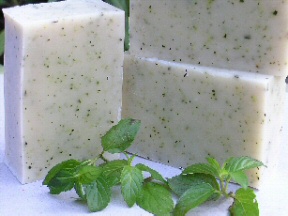 10. Organic peppermint soap
10. Organic peppermint soap
Organic peppermint soap should contain a fair amount of peppermint essential oil. This oil is deadly for insects like fleas and ticks, since it causes the insect’s nervous system to break down. It also smells wonderfully.
11. Dry pennyroyal (not as essential oil)
Dried pennyroyal can be placed around the house or dog house. It’s a biological deworming agent, as well as an excellent insect repellent.
However some caution is required. If you’re keen on using it in essential oil form, be cautious with its application. As essential oil it can never be ingested internally due to its high toxicity.
12. Alcohol, distilled water and essential oils spray
3.3oz (100 ml) ethanol or pure alcohol
6.6oz (200 ml) distilled water
30 drops lemon tree essential oil
30 drops eucalyptus essential oil
60 drops lavender essential oil
Spray it onto your dog’s fur, rub it in and leave to work its magic!
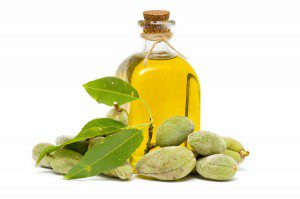 13. Aromatherapy spray for ticks, fleas and phlebotomus (sandflies)
13. Aromatherapy spray for ticks, fleas and phlebotomus (sandflies)
For those more familiar with aromatherapy oils, this spray is a strong insect repellent, it regenerates hair and skin, and soothes the dog. It is also recommended for dog owners.
Base oil: Sweet almond oil (Prunus Amygdalus dulci)
Drops of:
English or common lavender oil (Lavandula angustifà³lia)
Geranium oil (Pelargonium graveolens)
Common myrrh oil (Commiphora myrrha)
Bay laurel oil (Laurus nobilis)
Lemon eucalyptus oil (Eucalyptus citriodora)
Atlas cedar oil (Cedrus atlà¢ntica)
14. Homeopathic remedies
Sulphur 30C in water.
Homeopathic sulphur is usually not used to repel ticks, as its potency works better for smaller parasites, like fleas (and other biting bugs). It doesn’t kill them, it simply turns your pet’s skin far less attractive to these bugs, and in that way deterring them from living on the animal.
Ledum (Marsh Tea) 12C to 30C in water.
Remedy for puncture wounds, stings, animal bites, with amazing ability to heal tissues carefully from the deepest point and working up to the surface with specific action on hematoma (bleeding under the skin).
Staphysagria 6C with water
Mixing several pellets of Staphysagria 6C with water and spraying around cracks, crevices, and furniture will kill adult fleas and prevent eggs from maturing. Repeat twice a month or more frequently to keep the house free of fleas during summer.
15. Eastern black walnut (Juglans nigra) powder / capsules
Eastern black walnut works against fleas, ticks and sand flies. It also anti-parasitic properties; commonly used to cure tapeworms and ringworms. It is poisonous to horses, so consult your vet before giving it to animals.
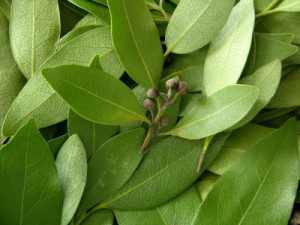 16. Bay leaves (crushed or ground)
16. Bay leaves (crushed or ground)
Rub crushed or ground bay leaves all over dog’s hair. You’ll have to repeat this process every time before going out.
17. Rosemary infusion
Add two cups of fresh rosemary leaves (needles) into 33oz (1 liter) of boiling water. Let it sit for 30 minutes, while it cools down. Sprinkle this infusion all over your dog’s fur, rubbing it in and allowing it dry naturally.
18. Lemon, salt and vinegar spray
Boil several lemons in water with a few tea spoons of salt. Once cooled, add one table spoon of apple cider vinegar. Spray it onto your pet’s coat and leave it to dry naturally.
19. Apple cider vinegar, salt and baking soda spray
8oz (240 ml) ACV
4oz (120 ml) warm water
½ tbs salt
½ tbs baking soda
Spray it onto your pet’s coat and leave it to dry naturally.
20. Natural, herbal shampoo
Use an herbal shampoo that contains a combination of pine cedar, bergamot, rosemary, lavender, eucalyptus, citronella, juniper or geranium.
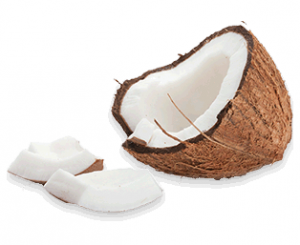 21. Coconut oil rub
21. Coconut oil rub
Coconut oil is truly one of nature’s greatest gifts. Amazingly enough, this oil can be given to your pets to improve their overall health. In its pure, unprocessed state it contains lauric acid, which acts as a natural flea repellent, so only but pure organic, unprocessed coconut oil. Rubbing only half a tablespoon of oil on your doggy’s fur will reduce body odor, improve coat shine, and act as a flea, tick or mite repellent. When ingested, coconut oil has natural antifungal, antibacterial, and antiviral properties and helps expel or kill intestinal parasites. Also, another one of my absolute favorites.
22. Essential oils
These are some of the most frequently used essential oils to treat pests:
- Lemongrass
- Lemon
- Citronella
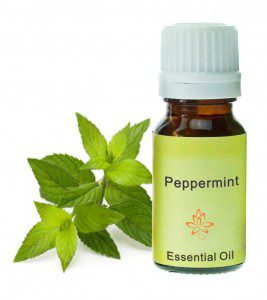
- Tea tree
- Eucalyptus
- Rosemary
- Bay
- Thyme
- Witch hazel
- Clove
- Cinnamon
- Linalool
- Rue
- Neem
- Juniper
- Cedar
- Geranium
- Bergamot
- Lavender
- Sweet almond oil
- Pennyroyal
As mentioned in one of the sections above, pennyroyal essential oil should be avoided. If ingested, it can cause seizures, coma and even death in animals. Preferably, use dry pennyroyal which can be placed around the house in safe places. Furthermore, not all essential oils are safe for animals. Oils such as citrus, cinnamon, clove, d-limonene, geranium, tea tree, lavender, linalool, bay, eucalyptus and rue oils should be used sparingly because they reportedly can cause allergic reactions in both cats and dogs.
Some of the safest oils for pets:
- Cedarwood
- Lemongrass
- Peppermint
- Rosemary
- Thyme
Indoor (house) treatments:
23. Vacuuming / Cleaning
Vacuum cleaners collect fleas from carpets, floors and dark shaded places underneath the furniture. If you’re facing a flea infestation, don’t forget to dispose of your vacuum bags, or preferably use water based vacuum cleaners that immediately drown fleas. If you have a bagless vacuum system, make sure to immediately splash all the dust (and fleas) with water, as you can expect the vacuumed fleas to attempt escape as soon as you open your vacuum cleaner. If the flea infestation is out of proportions, you might want to invest in a professional carpet cleaning service.
24. Salt and baking soda
Remove all furniture prior to sprinkling salt and baking soda heavily on your carpets. Once you applied both products, take a broom a sweep them from left to right so that they penetrate the carpet fibers. Leave it on for at least 12h, or up to a week, depending how severe your flea infestation is. Vacuum afterwards, but make sure to throw away the vacuum bag or to clean water vacuum cleaners well. Both salt and baking soda dehydrate the fleas, so they literally die out of thirst, or they’re just too thirsty to reproduce. Repeat the process during several days as fleas can hatch every 3 days in ‘optimal’ conditions.
Note, if you live in humid climates or it’s raining outside, the salt will absorb air moisture, so make sure to vacuum within 3-5h, instead of leaving overnight.
If you decide that your weapon of choice is only salt, you can use a squirt bottle filled with lukewarm water to dampen the carpet. Sprinkle salt heavily afterwards, and leave overnight. Vacuum in the morning.
25. Dehumidifiers, air-conditioning, vacuuming
All of these interrupt the flea life cycle. Fleas like humidity of at least 70%-75% to hatch, and larvae need at least 50% humidity to survive, they also need temperatures at 70 ° to 90 °F / 21 ° to 32 °C to survive. Lower temperatures slow down or completely interrupt the flea life-cycle.
According to Wikipedia, laboratory study done at the University of California showed that vacuuming catches about 96% of adult fleas. A combination of controlled humidity, temperature, and vacuuming should eliminate fleas from an environment. Altering even one of these environmental factors may be enough to drastically lower and eliminate an infestation.
26. Boric Acid (or Borax detergent)
Boric acid is a natural insecticide and antiseptic, found in certain volcanic areas around the world. In some countries it can be purchased in grocery stores in the laundry section, in others in specialized stores. It affects the insects’ metabolism, and the dry powder is abrasive to their exoskeletons. Sprinkle boric acid on all surfaces your dog has been on (carpets, furniture, hardwood flooring), let it sit overnight, vacuum and either get rid of the bag or make sure to wash the inside parts of your water vacuum cleaner well. I found that some people spray BA or Borax directly onto their pets, but I don’t recommend that.
Backyard/garden treatments:
27. Diatomaceous earth (natural, food grade)
DE is a naturally occurring soft, siliceous sedimentary rock, crumbled into a fine whitish powder. It consists of fossilized remains of diatoms, a type of hard-shelled algae. As an insecticide, the powder absorbs lipids from the outer layer of insects’ exoskeletons, causing them to dehydrate. In order to be effective, it must be uncalcinated and have a mean particle size below about 12 microns – food-grade type. Sprinkle it on all surfaces your dog has been on, let it sit overnight, and vacuum afterwards. Some people apply it directly onto the dog or cat, rubbing it well into their fur. It’s not toxic, but both DE and boric acid are very fine powders which when applied indoors, it is best to protect your moth and nose since they can dry out your mucus membranes. “DE was the only thing I’d found that could be and was used on infant animals, was chemical-free and completely non-toxic.” ~Shaggylord, Adirondack Mountains
28. Happy gardens
If you have a backyard or garden, keep the grass and shrubbery clipped. In areas where your pet likes to spend time, you may want to refrain from excessive watering. Sun, heat and dryness can reduce flea numbers, as they prefer warm and moist environments.
29. Nematodes or roundworms
The insect-parasitic nematodes are safe, as they are not the type that attack people, pets, or plants. They are a natural way of controlling fleas, as they act by feeding on flea larvae. They can be purchased at some pet and garden stores, and should be placed in moist, shady spots outside the house. Initially, introduce only a small number, as nematodes have a very high reproduction cycle. Research shoes that they are
most effective against fleas in moist, sandy soil, and they won’t survive on dry, sun exposed soils, but then again, neither do fleas.
 30. Plants that act as natural pest repellents
30. Plants that act as natural pest repellents
The best way to treat pests and insects in your garden is to do it naturally by planting herbs and shrubs which act as natural repellents. Consult the list of essential oils for options, adjusting for climate, soil type and sun exposure in your garden and backyard. Once the plant is grown, you’ll be able to rub the animal’s fur with freshly cut leaves, hence reducing your expenditure in essential oils.
Some useful links for further info:
[1] http://www.nativeremedies.com/petalive/ailment/cats-dogs-immune-system-remedies.html
[2] http://www.earthclinic.com/Pets/acvfordogs.html
http://oldfashionedliving.com/fleas.html
http://dogs.thefuntimesguide.com/2012/08/flea-home-remedies.php
http://www.earthclinic.com/Pets/flea-treatment-for-dogs-apple-cider-vinegar.html
http://www.earthclinic.com/Pets/fleas.html
http://jalapenogal.blogspot.pt/2013/04/home-remedy-for-repelling-ticks-fleas.html
http://lifestyle.iloveindia.com/lounge/natural-home-remedy-tick-repellent-8180.html
http://www.treehugger.com/green-home/21-natural-home-remedies-pets.html
http://www.greenderella.com/animals/your-dog-will-love-this-all-natural-tip-against-flees-and-ticks/
http://www.dogsnaturallymagazine.com/natural-solutions-tick-season/
Previous articles by Ana:
- Happy Armpits: Make Your Own Coconut Oil Deodorant (Recipe Included!)
- 9 FAQs About “Happy Armpits: Make Your Own Coconut Oil Deodorant”
About the author:
Croatian-born Ana is a quirky star-child who strives to expand into different activities and touch as many aspects of life as she can. She is not here to preach nor teach, just to share a different perspective of life on Earth and the various potentials she has found within. Ana lives life intuitively and freely, and hopes that her love for the starry sky, our space brothers and sisters, planet Earth, nature, dogs, sewing and life will enable her to shine tiny sparkles of hope and love around the world. Visit Ana’s website: https://web.archive.org/web/20160313120843/https://analilscorner.wordpress.com/
[pro_ad_display_adzone id=”110027″]

